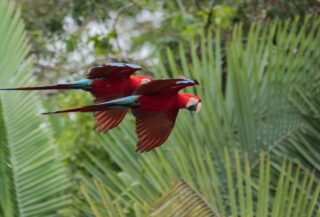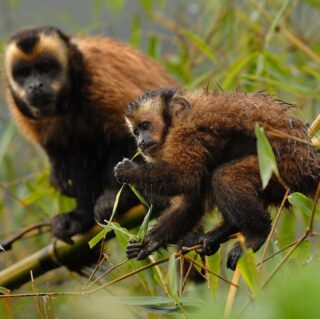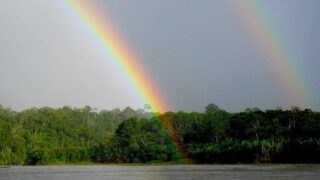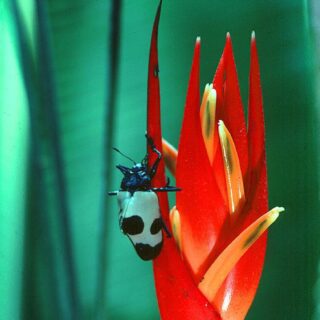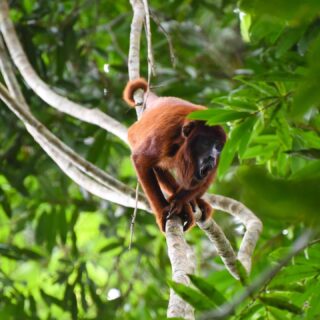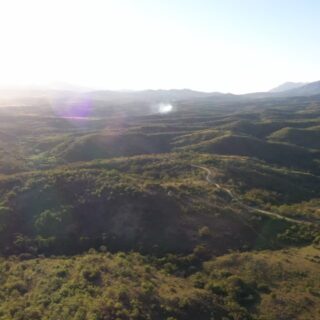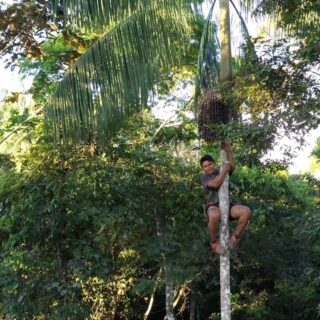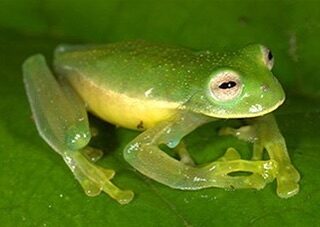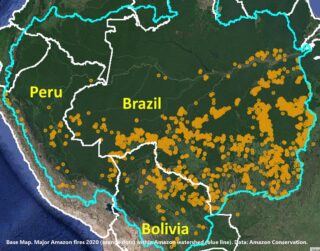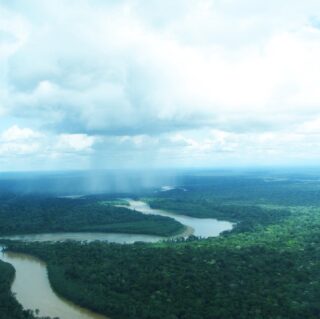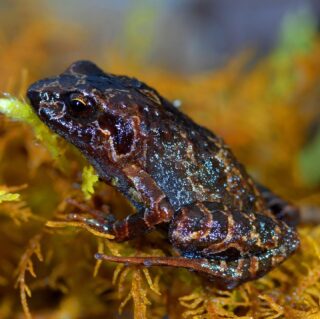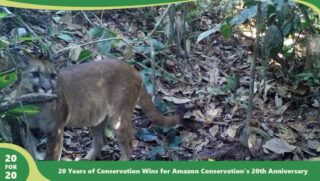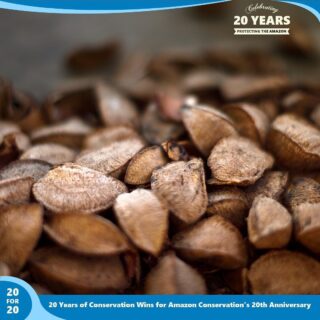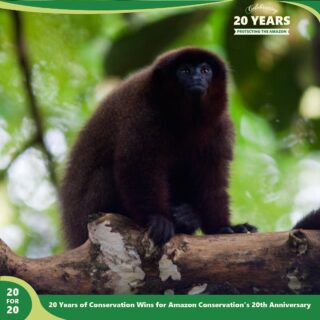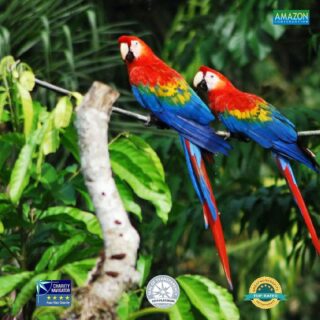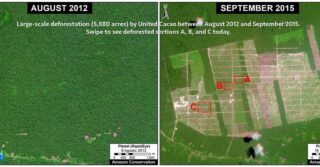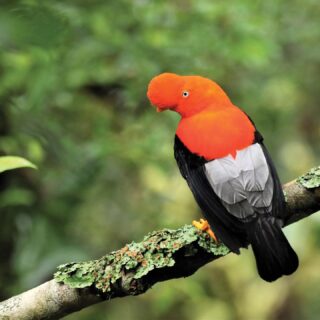Global Big Day took place earlier in May, and our teams of expert local and international birders took full advantage of our three lodges to find a whopping number of birds in a single day.
Uncategorized
Living in “sympatry” with sympathy: a story of tamarins at Los Amigos!
Their long and sometimes prehensile tails, and their capability to climb and jump among tree branches are a few of the key features of Neotropical primates. These highly arboreal organisms are perhaps one of the most charismatic groups in a tropical forest. Los Amigos harbors eleven primate species, from the largest and highly vulnerable spider monkey (Ateles chamek) to the smallest and very rare Goeldi’s tamarin (Callimico goeldii).
MAAP #86 Colombia: Chiribiquete – Deforestation Hotspots in The Colombian Amazon, Part 3
We present our third report* in a series investigating deforestation hotspots in the Colombian Amazon. Here, we focus on the “Chiribiquete-Macarena” hotspot, located between the Chiribiquete and La Macarena National Parks.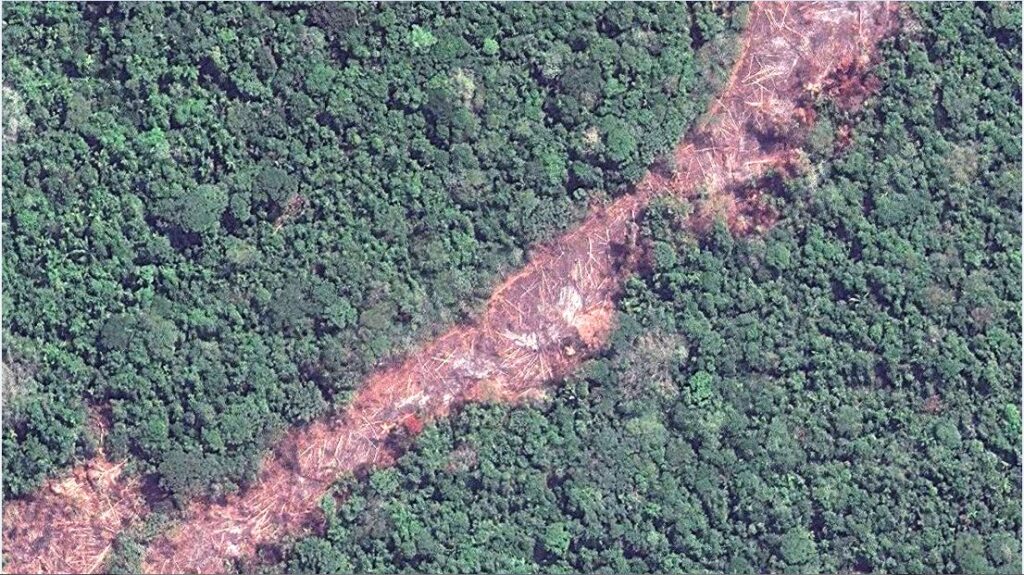
The Colombian government is finalizing plans to expand the boundaries of Chiribiquete National Park, an important step for conservation. However, we show (with high-resolution images) that deforestation is surging in the area and rapidly expanding towards these new boundaries. In fact, in 2018, deforestation has entered the newly expanded park.
MAAP #86: Deforestation Hotspots in the Colombian Amazon, part 3: Chiribiquete-Macarena
Unveiling the presence of the rare Grey-bellied hawk at Los Amigos

The Grey-bellied hawk (Accipiter poliogaster) is a rare diurnal raptor of the Accipitridae family and is distributed throughout the Neotropics. BirdLife has it listed as a “near threatened” bird and, despite their wide distribution, it is one of the least known of the raptors. In Peru, it occurs in the eastern side of the country, mostly in lowland tropical forests, and has been also reported along forest edges, and fragmented forest. Since 2015, birders at Los Amigos have been able to observe and admire the beauty of this raptor. This represents a unique opportunity to learn and increase the scarce knowledge about this species. In this note, we recapped A. poliogaster sightings at Los Amigos (LA).
In June of 2015, a Peruvian researcher specializing on raptors (R. Piana), found a juvenile A. poliogaster hunting at the forest edge near the Los Amigos River, at LA. The following year, September of 2016, Fernando Angulo (LABO Advisory member) and R. Piana located a reproductive pair defending their territory located ~1 km away from the station. Both individuals were sighted in the same location on consecutive days after the first encounter. On April of last year, a Peruvian bird guide, identified a juvenile of this species around LA garden, close to the territory identified the previous year. Lastly, on mid-April of the present year (2018), two juvenile individuals were located on a nest situated on an emergent tree and in the same territory of the reproductive pair previously identified. These events prove that A. poliogaster is breeding and nesting within the Los Amigos Biological Station, making this place a unique study site for this species.

The first recorded observation of the reproductive behavior and biology of A. poliogaster were described in Southern Brazil few years ago, where an adult female was observed incubating two eggs and an adult male was actively hunting. Only one nestling survived, and after ~49 days post-hatching the nestling left the nest. The fledging was fed by the female for ~90 days post-hatching. Given the importance of raptors in Neotropical forest, and LABO’s goal to increase the knowledge and conservation efforts of Neotropical avifauna, one of our Franzen fellows, Igor Lazo, will be assessing the ecology and natural history of A. poliogaster at LA, being the first study of this species in Peru. The information coming out from this project will create a firm foundation for further research on the Grey-bellied hawk!
For more references:
Boesing, A.L., Menq, W., Dos Anjos, L. 2012. First description of the reproductive biology of the Grey-bellied hawk (Accipiter poliogaster). The Wilson Journal of Ornithology, 124(4): 767-774.
Science Magazine Combating Deforestation: from Satellite to Intervention
A new policy article entitled “Combating deforestation: From satellite to intervention” was just published in Science, one of the leading journals in the world.
The authors include members of Amazon Conservation, World Resources Institute (Global Forest Watch), and Planet.
We first describe how rapidly improving satellite technology has created an unprecedented moment for near real-time monitoring.
Growing up in the rainforest: A Razor-billed curassow chick growth captured by a camera trap for over a month!
The razor-billed curassow (Mitu tuberosum) is one of the largest species of cracids (Galliformes:Aves) and a relatively uncommon bird in western Amazonian rainforest because of their low reproductive rates and highly vulnerable status due human disturbances such as hunting and habitat loss. These permanent threats have already driven one of the 24 species of Cracids, the Alagoas curassow (Mitu mitu), considered for many years a geographic variation of Mitu tuberosum, to extinction in the wild. Cracids’ presence is considered an indicator of healthy forests where hunting is absent or low, allowing them to play important ecological roles as seed dispersers and seed predators.
Los Amigos harbors 4 species of cracids, such as the Speckled chachalaca (Ortalis guttata), the Spix’s guan (Penelope jacquacu), Blue-throated piping guan (Pipile cumanensis), and the Razor-billed curassow (Mitu tuberosum), all of which have diurnal and terrestrial behavior. Camera traps have become an important tool to monitor and obtain ecological information about terrestrial birds. At the beginning of this year, LABO’s cameras registered the presence of a Razor-billed curassow chick, and what we believe to be its growth during a time lapse of over 40 days.
On January 4, one of our camera traps deployed in the interior of a bamboo patch captured the presence of two razor-billed curassows. The images indicate the occurrence of, perhaps, an adult male and female, based on the physical traits, specifically the size of their bills since males have a larger bill formation compared to females. Two weeks after, one individual was registered with a chick, walking right under the long terminal tail of the adult. The chick presented dark feathers, mostly black and brown coloration with some lighter patterns throughout the body and head, and a white belly. The characteristic laterally compressed and bright red bill of this species was not yet developed. After 42 days, the camera captured an adult individual with a visibly grown nestling walking again under the adult’s tail. Could it had been the same chick captured more than a month before? Perhaps yes! This time the immature offspring had body plumage coloration similar to an adult, mostly black, except the head; and the red bill was also noticeable, but not fully developed. In the video, the adult individual was feeding its offspring, confirming the probability of being the mother.
The razor-billed curassow, locally known as “paujil,” is a commonly hunted cracid in Amazonia. Despite the IUCN Red List considering it as “least concern”, there are not many studies or available literature that describes its biology and/or ecology. More studies on their population size, reproductive behavior, breeding and nesting information, are required to determine their current status. Cracids, in general, lay on average two eggs every year; hatchlings are exposed to high mortality rates during their first year, and reach maturity after the third year! This is a fairly long maturation period, but the wait is worth it just to admire a beautiful large terrestrial bird like the razor-billed curassow!
What are your guesses? Could this camera be showing us the growth of the same curassow chick?
MAAP #85: Illegal Logging in The Peruvian Amazon, And How Satellites Can Help Address It
We propose a new tool to address illegal logging in the Peruvian Amazon: using cutting-edge satellites to monitor logging road construction in near real-time.
Illegal logging in the Amazon is difficult to detect because it is selective logging of individual valuable trees, not large clear-cuts.
However, a new generation of satellites can quickly detect new logging roads, which in turn may indicate the leading edge of illegal logging.
Here, we analyzed satellite imagery to identify all new logging roads built in the Peruvian Amazon over the past three years (2015-17).
We then show how it is possible to track logging road construction in near-real time, using three satellite-based systems: GLAD alerts, Sentinel-1 (radar satellites), and Planet (optical satellites).
Camera Traps: Continuing the Monitoring of Forest Health
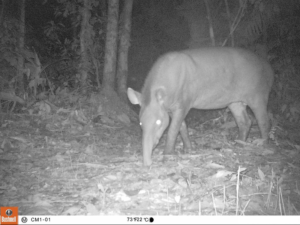
Our camera trap efforts at Santa Rosa de Abuná are part of our larger camera trap initiative to monitor biodiversity in the Amazon. To date, we have recorded well over 10,000 photos and videos from our camera traps, which enable us to track the presence of a variety of fauna including large, predators like jaguar, that are indicators of a healthy ecosystem.
Some of the species captured on our 76 camera traps at Santa Rosa have an endangered status (Near Threatened or Vulnerable) according to the IUCN Red List, including Jaguars, Giant Anteaters, Tapirs, and Pale-winged trumpeters.
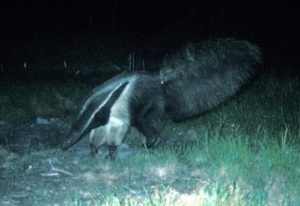
Showing consistent evidence of these species in our conservation area helps demonstrate to governments and others the need to protect the unique biodiversity that lives there. For instance, we have been able to show, through a density analysis of our camera trap efforts, that Santa Rosa and the indigenous territory of Tacana that we protect have a healthy jaguar population of 4.3-6.6 jaguars per every 100km2 (39 miles2).
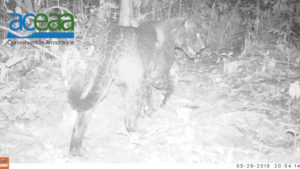
Our camera trap efforts in Bolivia have also caught on camera a jaguar (Panthera onca) with a very unique complexion. The animal is a melanistic jaguar, a color morph which occurs at about 6 percent frequency in populations, giving it an almost “black” look that is a stark contrast to the species normal orange/ brown complexion. This is the first time this type of jaguar has ever been recorded in the entire country of Bolivia.
MAAP #84: New Threats to The Peruvian Amazon (Part 1: Yurimaguas-Jeberos Road)
The efforts and international commitments of the Peruvian Government to reduce deforestation may be compromised by new projects do not have adequate environmental assessment.
In this series, we address the most urgent of these projects, those that threaten large areas of primary Amazonian forest.
We believe that these projects require urgent attention from both government and civil society to ensure an adequate response and avoid irreversible damage. For example, in the case below, it is not known whether there is an environmental impact study.
The first report of this series focuses on a new road (Jeberos – Yurimaguas) that threatens a large expanse of primary forest in the northern Peruvian Amazon (see Image A).
Açaí Safety Harnesses Facilitate Harvesting and Save Lives
Promoting forest-friendly livelihoods that are safer, more profitable, and encourage conservation
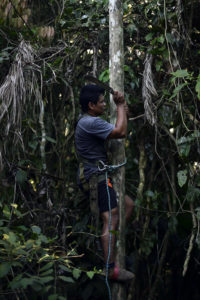 We have been working with the açaí and Brazil nut harvesters, who depend on the Santa Rosa de Abuná conservation area for their livelihood, to improve how they locate, gather, and process the forest goods they sustainably harvest. This is a key conservation and community development strategy for providing local people with the incentive to keep forests standing, as many of the globally in-demand fruits and nuts they harvest can only grow in healthy forests – not in large-scale plantations. With this strategy in mind, we help families improve their income by growing their local economies through instituting ecologically sustainable activities that protect the forests they call home.
We have been working with the açaí and Brazil nut harvesters, who depend on the Santa Rosa de Abuná conservation area for their livelihood, to improve how they locate, gather, and process the forest goods they sustainably harvest. This is a key conservation and community development strategy for providing local people with the incentive to keep forests standing, as many of the globally in-demand fruits and nuts they harvest can only grow in healthy forests – not in large-scale plantations. With this strategy in mind, we help families improve their income by growing their local economies through instituting ecologically sustainable activities that protect the forests they call home.
Açaí harvesters usually climb 10-15 açaí trees a day with heights reaching up to 65 feet to bring down bundles of açaí weighing dozens of pounds – a tiring and dangerous activity. In 2017, we worked hand-in-hand with community members to design and test prototypes of a safety harness that would meet their needs in the field. This year, we built on their experiences from the previous year’s harvest season and improved the design and features of the harnesses. We distributed 90 new climbing safety harnesses to harvesters in five communities of Santa Rosa. The beneficiaries were enthusiastic because the harness is much safer and more efficient to use. All of the harvesters were trained in how to use the equipment and began utilizing them immediately in the current harvesting season.
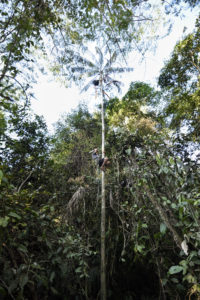 The new harnesses have already proved their value. One of the açaí harvesters, Omar Espinoza, used the new harness to climb a 50-foot high açaí tree, which he does on a daily basis during the harvest season in order to collect the fruit that generates almost all of his family’s income. Due to a misstep coming down the tree with a heavy branch of açaí in hand, Omar fell from a height of about 40 feet, head first. Thanks to one of the features in our safety harnesses – aptly called a “life line” – he was stopped from hitting the ground and just dangled from the harness instead. His head was just a few feet from the ground. Using the harness he had before this project would have meant a certain fall. Had it not been for this new equipment, he would have faced severe and debilitating injuries or possibly, death.
The new harnesses have already proved their value. One of the açaí harvesters, Omar Espinoza, used the new harness to climb a 50-foot high açaí tree, which he does on a daily basis during the harvest season in order to collect the fruit that generates almost all of his family’s income. Due to a misstep coming down the tree with a heavy branch of açaí in hand, Omar fell from a height of about 40 feet, head first. Thanks to one of the features in our safety harnesses – aptly called a “life line” – he was stopped from hitting the ground and just dangled from the harness instead. His head was just a few feet from the ground. Using the harness he had before this project would have meant a certain fall. Had it not been for this new equipment, he would have faced severe and debilitating injuries or possibly, death.
“This is a dangerous job, and there have been many accidents,” Tomás Espinoza, Omar’s dad, says. “No one knows it but us. At times we feel like we have been forgotten by the rest of the country. It’s good to have the support of [Amazon Conservation].”
Omar climbing an açaí trip using the new safety harness. The striped lifeline saved his life once already.

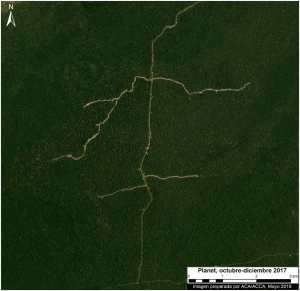
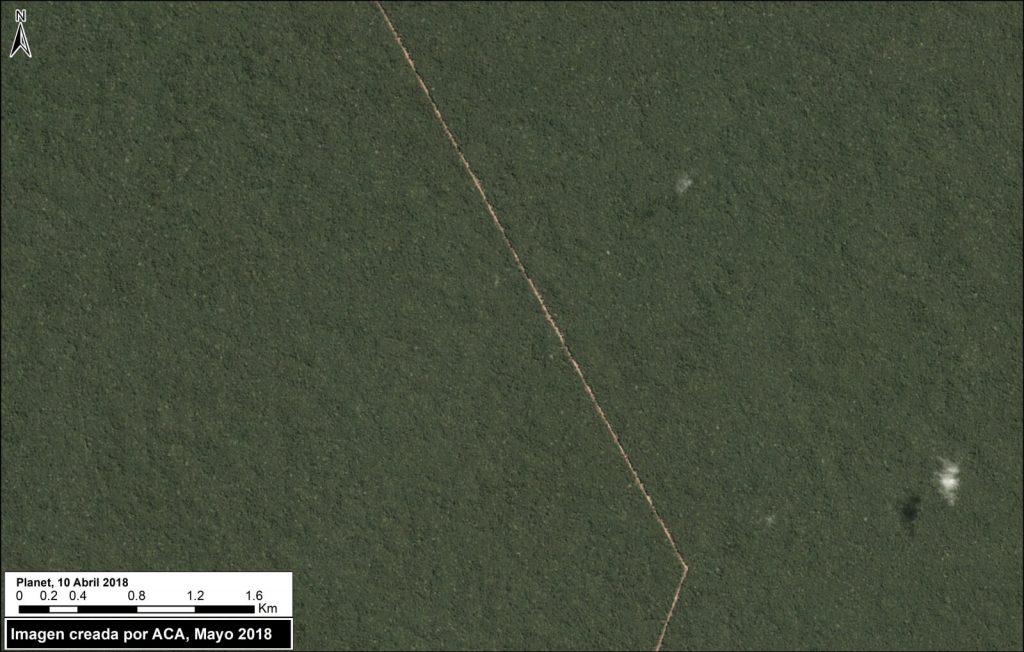
